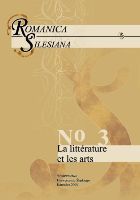Graceful Pre-Raphaelites and Pre-Raphaelite Grace: Victorian visual arts in Margaret Atwood’s "Alias Grace"
Grace Pre-Raphaelites and Pre-Raphaelite Grace: Victorian visual arts in Margaret Atwood’s "Alias Grace"
Author(s): Anna CzarnowusSubject(s): Language and Literature Studies
Published by: Wydawnictwo Uniwersytetu Śląskiego
Keywords: Pre-Raphaelite visual arts; victorian sensation novel; symbolic corruption of female body; representing Ophelia; rewriting Victorianism
Summary/Abstract: The visual imagery of Margaret Atwood’s "Alias Grace" might have as one of its sources the “graceful”, hence popular, art of the Pre-Raphaelite Brotherhood. Grace’s beauty veils her emotional torment in the mode similar to the comely faces of Pre-Raphaelite models: theirs are the faces disguising suffering and insanity. Moreover, during her confinement in the asylum Grace is even compared by one of the characters to the raging Ophelia, a theme recurrent in the Victorian art. In her “psychoanalytic” sessions the servant reveals her obsession with the gothic image of her dead mother drowning in the sea, metamorpho sing into another woman, perhaps Mary Whitney or Nancy Montgomery. In the dream vision of doctor Simon Jordan in turn, Grace overcomes the Ophelia-like death in water and lives on despite the difficult past. Consequently, Pre-Raphaelite paintings constitute another Victorian element in the novel’s dense texture, which has already been interpreted by the critics as the one involving Dickensian orphans and Coventry Patmore’s “angels in the house”.
Journal: Romanica Silesiana
- Issue Year: 2008
- Issue No: 3
- Page Range: 68-81
- Page Count: 14
- Language: English

